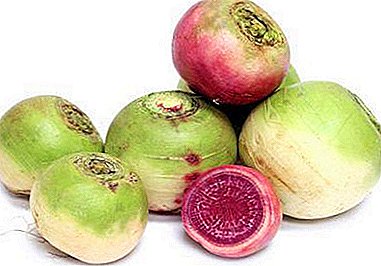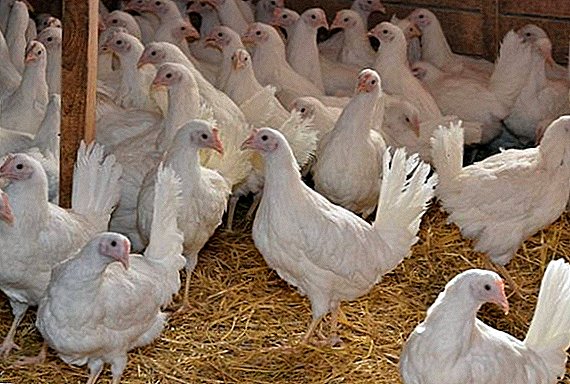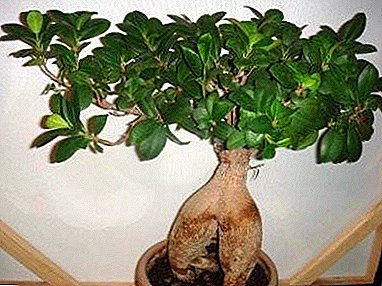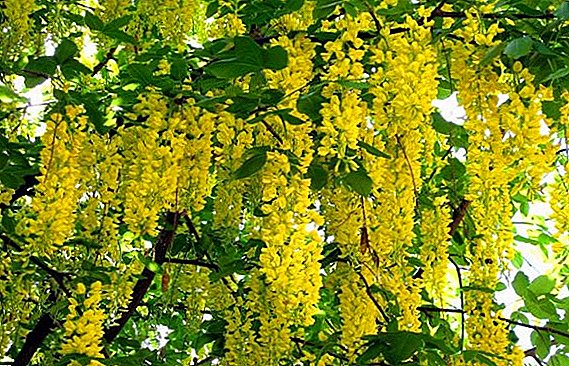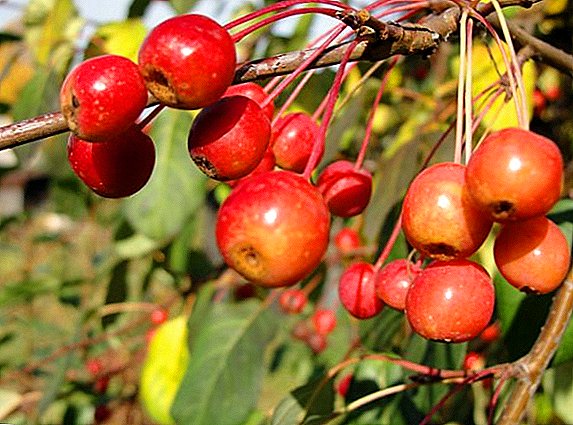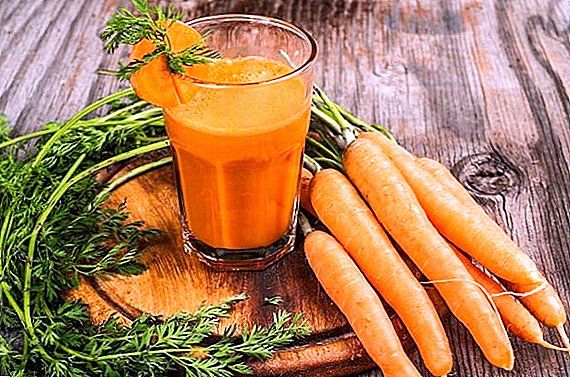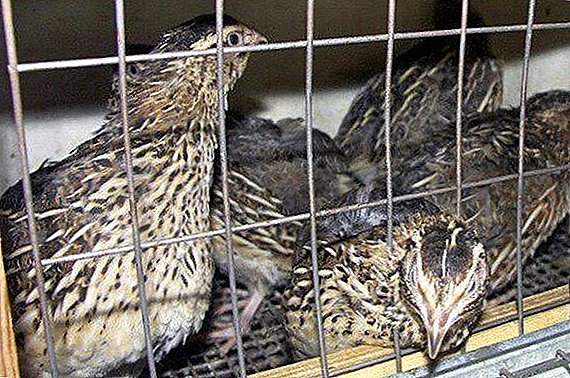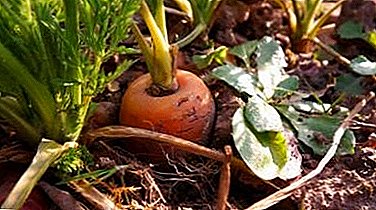
Gardening does not stand still, but some things remain in service with the summer resident from year to year - his majesty, Ammonia.
Why is it used in growing carrots? Let's figure it out! Ammonia, or ammonia, is a nitrogenous compound also known as ammonium hydroxide solution (about 10% of the concentration of ammonia in water). It is a clear liquid with a strong odor, it is also called ammonia water.
Is it possible to feed with ammonia?
Is it possible? Need to! Nitrogen is an indispensable element for the existence of many micro and macro organisms.. Plants need nitrogen like we have in food. And although its content in the air reaches 78%, plants are able to assimilate it from the soil only in the bound form. That is why various chemical compounds are used to feed.
Useful and harmful effects of feeding
 Ammonia benefits:
Ammonia benefits:
- It saturates the soil with easily assimilated nitrogen, helping to increase the green mass.
- Fights pests (ants, weevil, aphids, caterpillars, etc.)
- Improves the appearance of carrot bushes.
Harm ammonia:
- Abusing nitrogen-containing fertilizers you risk getting a crop with a high content of nitrates. This often sin greenhouse farms. Eating such vegetables can cause severe poisoning of the body.
- If you overdo it with nitrogenous supplements, you can damage the flowering and fruiting, getting a lush green bush.
- Excess nitrogen increases the risk of developing fungal diseases.
Without using other fertilizers
With a nitrogen deficiency carrot bushes turn yellow and die. In such cases, an ammonia solution is used. Unlike other forms of nitrogen, ammonia solution is absorbed very quickly. But bring it only in the case when the tops appear so-called "wilting symptoms", which we will talk about later.
With sawdust
Sawdust in this dressing play the role of mulch. Especially successful combination of sawdust, ammonia, potassium chloride and superphosphates.
With peat
Peat contains a large amount of nitrogen, and ammonia-peat dressing will become your wand in the garden. The main thing is to learn how to prepare the mixture by mixing ammonia with peat, phosphate rock and rotted manure. A 1 square meter plot will need 10 kg of the mixture.
With manure
Mix the rotted manure with ammonia - a favorite method of summer residents. Such top dressing is very useful, as it has a complex multilateral impact on the soil. It is necessary to dilute the manure with water 1 to 5.
Symptoms report that a carrot needs watering
 So how do you understand that carrots are in trouble and urgent watering is required with ammonia? Here are some symptoms of carrot nitrogen starvation:
So how do you understand that carrots are in trouble and urgent watering is required with ammonia? Here are some symptoms of carrot nitrogen starvation:
- Poor growth.
- Leaf size does not increase.
- The stem becomes thin and brittle.
- Pallor and yellowness on lower leaflets.
- Dying off begins from the midrib and spreads throughout the leaf.
Precautionary measures
Don't forget that ammonia is a chemical hazardous to the human body. There are several basic rules for using ammonia for processing crops:
- Keep ammonia out of the reach of children for two (in a bubble) or five years (in ampoules).
- When preparing the solution to work in gloves: ammonia should not get on the skin.
- It is necessary to prepare the solution on the street or in a well-ventilated area, otherwise you can be poisoned.
- When handling beds, wear a respirator or mask, gloves, goggles, trousers and a long-sleeved shirt.
If you have a diagnosis of "vegetative dystonia" (VVD), do not give up ammonia in the garden, otherwise it will adversely affect your health!
Step-by-step instructions for use: how to process ammonia?
How to handle carrots in the garden?
- Inventory. You will need a watering can without a sprayer, an atomizer will not work here - most of the composition will evaporate in the air.
- Preparation of the mixture. What are the proportions for watering? Mix 4 liters of water and 50 ml of liquid ammonia solution. If a weaker solution is needed, take 20 ml of alcohol and 10 liters of water. The maximum dosage is 10 ml per 1 liter of water.
- Watering time. Processing should be carried out in the summer early in the morning or in the evening, it will save the plants from burns. The weather must be calm.
- Feeding process. Pour the solution strictly under the root.
Preventive treatment
 It is important not to forget about the prevention of nitrogen deficiency. In summer, the soil loses a lot of beneficial trace elements, and by the fall it is completely depleted. For prevention, you can use both a normal ammonia solution and fertilizing with it: ammonia with sawdust, peat and manure.
It is important not to forget about the prevention of nitrogen deficiency. In summer, the soil loses a lot of beneficial trace elements, and by the fall it is completely depleted. For prevention, you can use both a normal ammonia solution and fertilizing with it: ammonia with sawdust, peat and manure.
- Just ammonia. If you notice yellowing of the leaves during the growing season, use an ammonia solution. Carrots literally come to life in his eyes. If you notice signs of nitrogen starvation, watering should be increased and the mixture should be used harder: 10 liters of water 100 ml of ammonia. It is important to spray the tops of the sprayer, rather than water.
- With peat. To begin with, mix peat with manure and phosphate rock. Note, if the peat is too "sour" you need to add lime. The resulting composition contribute 10 kg per 1 square. meter of soil.
- With manure. We mix ammonia water with manure, having previously diluted it with water in the ratio 1: 5.
- With sawdust. Many people are afraid to use sawdust in the garden, as there is often a wirewound there, but the combination of sawdust with ammonia completely eliminates this problem. Sawdust is added both to the top dressing itself, it performs the function of loosening the soil, and is sprinkled on the beds between descents for mulching.
To build green mass
Such processing is necessary only in the first half of the vegetative period of carrots and stimulates the active growth of foliage. Mix 2 tbsp. l 10% ammonia and 10 liters of water.
With nitrogen starvation plants
If you notice signs of starvation, increase concentration: 6 tbsp. 10% ammonia per 10 liters of water. It is necessary to spray the resulting carrot solution in the morning or in the evening, avoiding active sunlight.
From pests
With ammonia you get rid of:
- Ants
- Aphids.
- Medvedok.
- Weevil.
- Caterpillars
- Wireworm
- Carrot fly.
 So, we write down the universal recipe:
So, we write down the universal recipe:
- 100-200 g of household soap rubbed on a grater;
- dissolve in 1 l. hot water;
- After slowly, carefully stirring, add ammonia solution (10 l of water + 50 ml of 25% ammonia).
Use this solution immediately and dispose of residues.
Incorrect watering: definition, consequences, remedial measures
Measure is needed in everything, especially in working with fertilizers.. Having exceeded the concentration of ammonia in the solution, you risk getting bitter carrots, and maybe even under the elegant green tops will not be more or less decent size carrots. So calculate the dose correctly and if you overdo it, do not worry - reduce the concentration for the next couple of weeks, gradually returning to normal.
Remember, the bitter taste and lack of harvest is not the only reason why the dose should not be exceeded - this will also have a negative effect on human health.
Enriching the soil with ammonia can not only transform your garden outwardly, but also save you from hidden problems - pests. In this case, the fight against them will benefit your harvest. Observe safety precautions and do not overdo it with dressings and then in the fall you will receive the best reward of the gardener - a great harvest!


